GOT A UI/UX
DESIGN PROJECT?
AI-Generated Art: Putting the Art in Artificial Intelligence
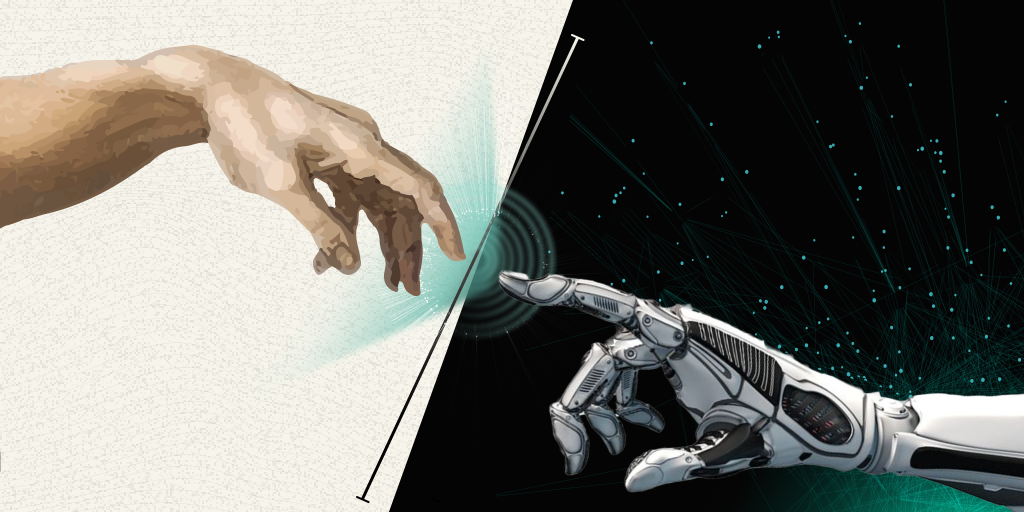
AI-generated art is a field of digital art where art is developed using algorithms. These algorithms are basically trained on large datasets of existing artwork and textual prompts, among other things. Evidently, Artificial Intelligence (AI) has been one of the most significant advancements in the field of technology. Over the past few decades, AI has infiltrated nearly every aspect of our lives. The world of art and creativity is no exception.
History of AI
The idea of creating machines that could mimic human behavior and intelligence has been around for centuries, but it wasn’t until the 20th century that modern AI research really took off.
The origins of modern AI can be traced back to the 1950s, when computer scientist John McCarthy coined the term “artificial intelligence” and organized the Dartmouth Conference, which is widely considered to be the birthplace of AI. The conference brought together researchers from various fields to discuss the possibility of creating machines that could think and learn like humans.
Throughout the 1950s and 1960s, AI research made significant strides. Researchers developed the first AI programs during this time and began exploring the potential applications of AI in fields like medicine, education, and finance.
In the 1970s and 1980s, interest in AI waned as researchers encountered significant technical and theoretical challenges. Despite this setback, researchers continued to explore the possibilities of AI, and by the 1990s, AI research was once again on the rise.
The advent of the internet and the proliferation of big data in the 21st century has transformed the field of AI. Today, we use AI technologies like machine learning and deep learning in a wide range of applications, from natural language processing and image recognition to autonomous vehicles and healthcare, as well as creating art.
Over time, AI has evolved into a complex system that can analyze data, make predictions, and even learn from its own mistakes. Today, we also use AI in a variety of industries, including healthcare, finance, and entertainment.
AI Roots in Art History
AI art has a rich and fascinating history that spans over several decades, as early as the 1950s. Computer scientist A Michael Noll started generating computer-generated patterns and images using an analog computer. Noll’s pioneering work laid the foundation for the use of computers as a creative tool.
In the 1960s and 70s, artists began experimenting with computer programs and algorithms to create art. Artists such as Vera Molnar, Michael Noll, and Frieder Nake were among the early adopters of computer art, using algorithms to generate geometric patterns and shapes.
However, it was not until the 1990s that we coined the term “AI art”, and artists began exploring the possibilities of using artificial intelligence as a creative tool. The development of machine learning algorithms and the growth of computing power allowed artists to create more complex and sophisticated AI-generated art.
In the early 2000s, artists such as Golan Levin and Rafael Lozano-Hemmer were among the first to use machine learning algorithms to create interactive installations that responded to the viewer’s movements and actions. This marked a shift towards more immersive and interactive AI art.
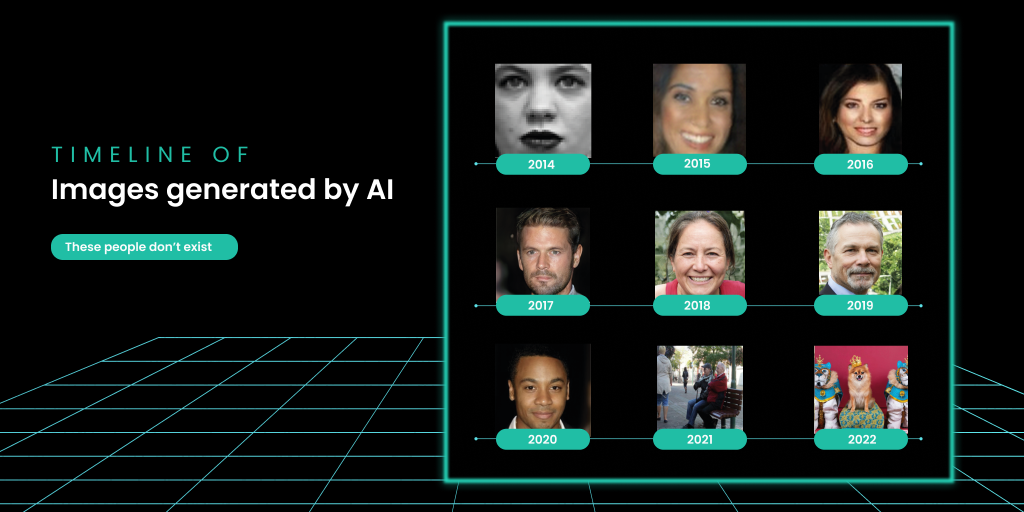
These are some images of people which were generated using AI (They don’t exist). As we see, the images produced are more realistic if one has to compare the images from 2014 to 2022.
AI-Generated Art in the Emerging World of Creativity
In recent years, AI has become increasingly popular in the world of art and creativity. AI-generated art is often created by algorithms that have been trained using data from a particular style or genre of art. These algorithms can analyze patterns in the data to create complex, unique works of art that mimic the style of famous artists.
Generative adversarial networks (GANs), a type of deep learning algorithm, have been used to create AI-generated paintings, music, and even fashion designs.
One of the most famous examples of AI-generated art is the “Portrait of Edmond de Belamy” by the Paris-based art collective Obvious. This painting was created using a machine learning algorithm that was trained on a dataset of 15,000 portraits from the 14th to the 20th century. The algorithm was programmed to generate a new portrait by combining different elements from the dataset, resulting in a unique and somewhat surrealistic image.

Google developed the “DeepDream” algorithm, which is a notable example of AI art. One can use this algorithm’s deep neural networks to generate images that have been heavily influenced by a set of trained images. The resulting images often have a dream-like quality, with swirling patterns and unexpected juxtapositions.
Another example that comes to mind – MIT researchers developed the “NeuralSynth” algorithm. This algorithm uses deep learning techniques to generate images that are influenced by a user’s thoughts and emotions. The user wears an EEG headset that measures brain activity, and the algorithm generates images based on the patterns it detects in the user’s brain waves.
Today, AI art is a rapidly growing field. It blurs the boundaries between human and machine creativity. It also raises questions about the role of the artist and the nature of art itself. With the continued development of machine learning algorithms, the possibilities for AI-generated art are endless. We are only at the beginning of an exciting new era in art and technology.
While AI-generated art has the potential to be innovative and groundbreaking, there are also some potential drawbacks to consider. For example, some critics argue that AI-generated art lacks the emotional depth and human touch of traditional art forms. Additionally, there are concerns about the role of human artists in an age where machines are increasingly taking over creative tasks.
AI-Generated Art – Friend or Enemy?
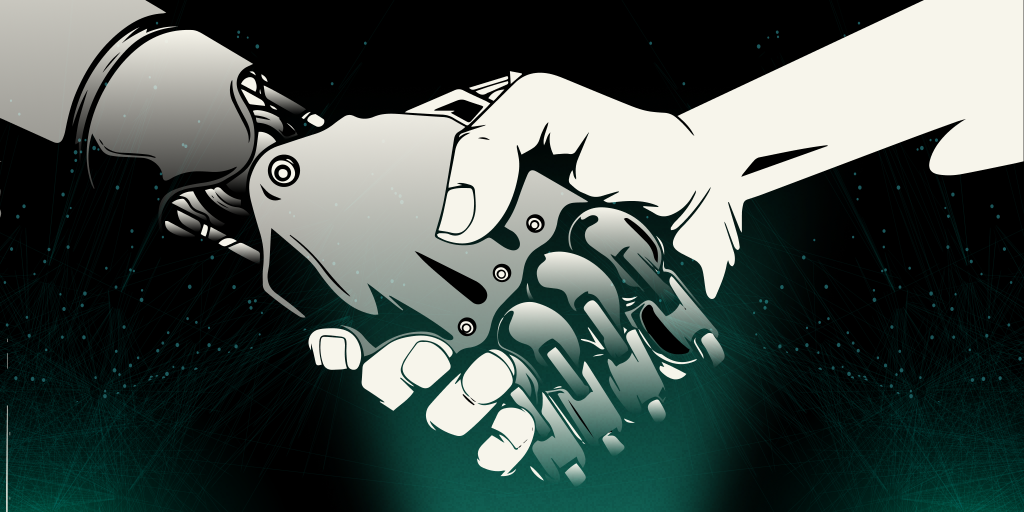
The use of AI in art has both advantages and disadvantages. On the plus side, one can create AI-generated art much faster than traditional methods. However, the use of AI in art has also raised concerns about the role of the artist and the potential loss of creativity. Let’s discuss the pros and cons of having AI infiltrate the world of art in detail.
Pros
- Increased Efficiency: AI can create art much faster than humans. It can analyze vast amounts of data and produce artwork based on that data in a relatively short time. This increased efficiency can allow artists to create more art and experiment with new styles and techniques.
- Unique and Innovative Pieces: One can easily make unique pieces that are difficult to produce by hand. The AI system algorithms analyze vast amounts of data, identify patterns, and create art. This art is completely different from anything human-made.
- Access to New Tools and Techniques: The use of AI in art provides access to new tools and techniques. One can use these tools to create more intricate and detailed artworks. They can also experiment with new styles and mediums.
- Increased Accessibility: We can now produce AI-generated art at a lower cost than traditional methods. This can make art more accessible to people who may not have been able to afford it otherwise. Additionally, we can use AI to create accessible art for people with disabilities.
- New Opportunities for Collaboration: Using AI in art can lead to collaboration between artists and scientists, technologists, and engineers. This interdisciplinary collaboration can lead to breakthroughs in art and technology.
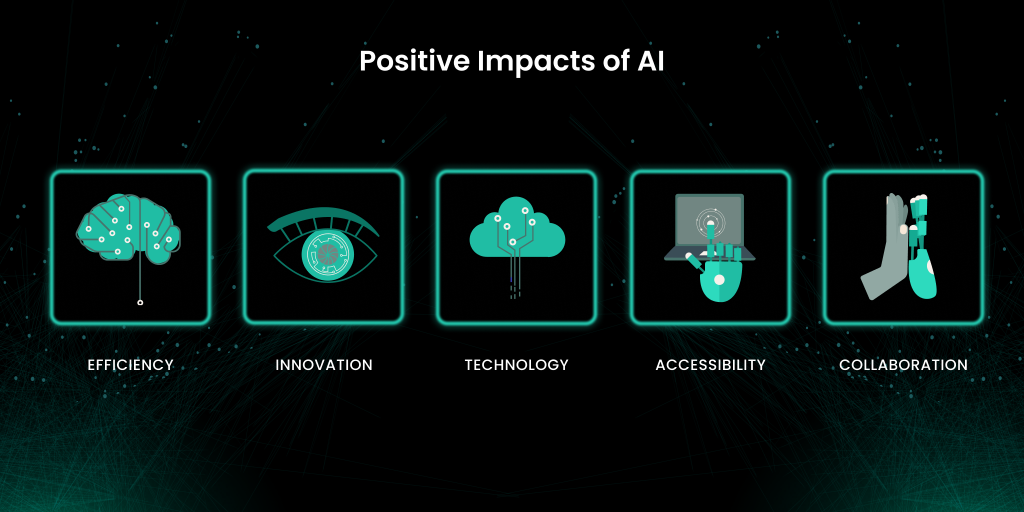
Cons
- Loss of Creativity: AI in art can lead to a loss of creativity. The limitations of AI algorithms are endless. They cannot replicate the intuition and imagination of human artists. The fear is that this could lead to a homogenization of art, with all AI-generated art looking the same.
- Dependence on Technology: The use of AI in art can create a dependence on technology. This can lead to a loss of traditional artistic skills and techniques. It may also diminish appreciation for the beauty and complexity of traditional art forms.
- Ethical Concerns: There are ethical concerns surrounding the use of AI in art. For example, who owns the rights to AI-generated art? Can one copyright AI-generated art? No one has an answer yet, and the lack of clear guidelines can lead to legal disputes.
- Potential for Bias: AI systems are only as unbiased as the data they are trained on. There is a concern that AI-generated art could perpetuate bias. This is because the algorithms used by AI systems are often based on biased data sets.
- Devaluation of Traditional Art Forms: The increased use of AI in art could lead to a devaluation of traditional art forms. There is a fear that people may come to view traditional art as inferior. This may in turn lead to a loss of appreciation for traditional art forms.
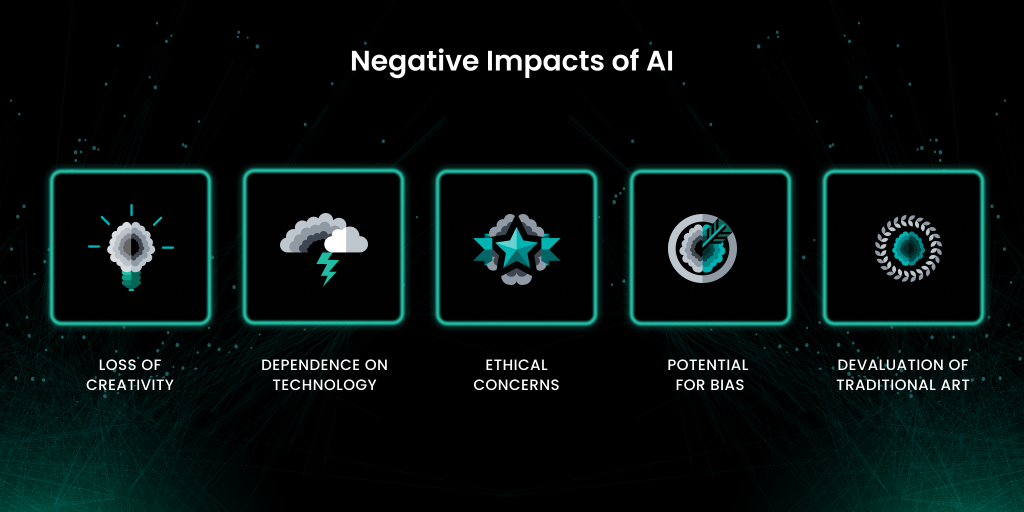
AI is a tool you think with, but not an end in itself.
How to Use AI in Art
Choose an AI art generator: There are several AI art generators available, each with its own unique features and functions.
Train the algorithm: Once you have selected an AI art generator, you will need to train the algorithm using data. The data can be from a particular style or genre of art.
Adjust the parameters: You can adjust various parameters to customize the output of the AI art generator. This can be the color palette or the level of detail.
Generate the artwork: Once you have adjusted the parameters, you can generate the artwork and refine it as needed.
Edit the artwork: After generating the artwork, you can make any necessary edits or modifications to the final product.
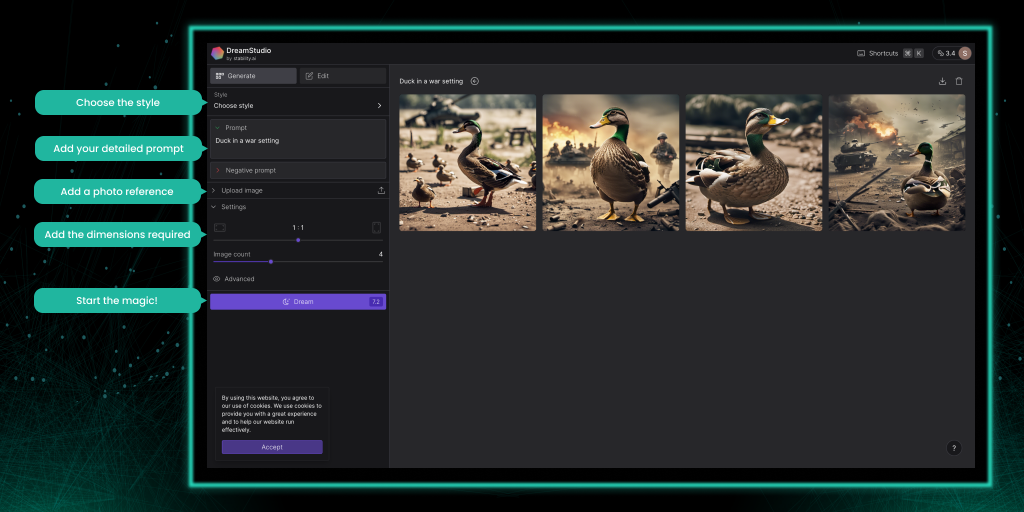
Famous AI Art Generators
- AICAN: Rutgers University created AICAN. It uses deep learning algorithms to create unique works of art.
- DeepDream: Google developed DeepDream uses neural networks to create dream-like images.
- Prisma: Prisma is an AI art generator that uses artificial neural networks to apply artistic filters to photos.
- Artbreeder: Artbreeder is an AI art generator that allows users to mix and match different styles and genres of art.
- GANbreeder: GANbreeder is an AI art generator that uses generative adversarial networks (GANs) to create abstract and surreal images.
In conclusion, AI has revolutionized the world of art and creativity. It allows artists and designers to create unique and innovative pieces. However, the use of AI in art also raises concerns about the role of the artist and the potential loss of creativity. By understanding it’s history and impact, we can continue to explore exciting possibilities in the world of art and technology.
